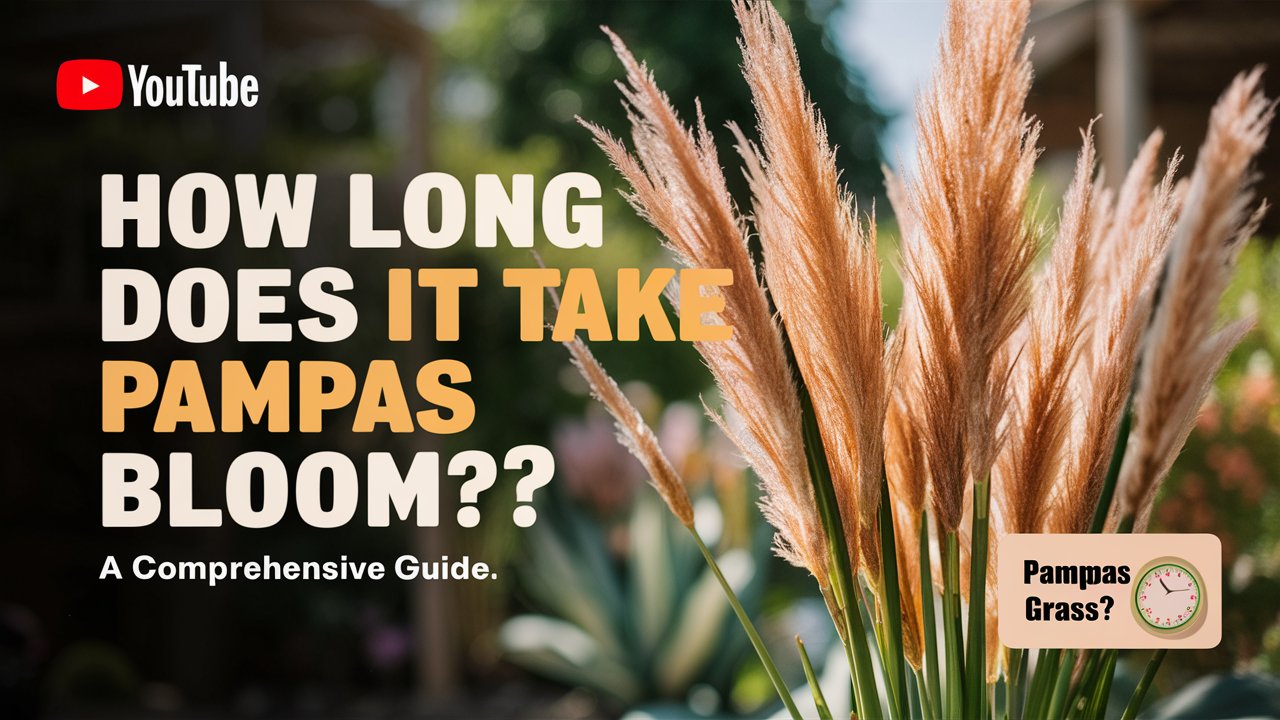Pampas grass, with its stunning feathery plumes and towering height, has become a favorite among gardeners and landscape designers. Its exotic appearance and ability to create a striking visual impact make it a sought-after addition to many gardens. But, how long does it take pampas grass to bloom? This question is crucial for gardeners planning their landscape design or simply wanting to enjoy the beauty of this ornamental grass. In this blog post, we will delve into the growth cycle of pampas grass, factors influencing its bloom time, and tips for ensuring a healthy, vibrant display.
Introduction to Pampas Grass
Pampas grass (Cortaderia selloana) is a perennial grass native to South America. Known for its tall, dense clumps and feathery plumes, it can reach heights of up to 10 feet. This ornamental grass is popular for its dramatic appearance and minimal maintenance requirements, making it an ideal choice for many landscapes.
Understanding the Growth Cycle
So, how long does it take pampas grass to bloom? Typically, pampas grass will bloom within its second or third year after planting. The growth cycle of pampas grass can be broken down into several stages:
- Seed Germination: Pampas grass seeds usually take about 2 to 3 weeks to germinate under optimal conditions.
- Establishment: During the first year, the grass focuses on establishing a strong root system and producing foliage.
- Growth and Maturation: By the second year, pampas grass starts to grow more vigorously, reaching its full height and preparing to bloom.
- Blooming: From late summer to early fall, pampas grass produces its signature feathery plumes.
Factors Influencing Bloom Time
Several factors can influence how long it takes pampas grass to bloom:
Climate and Weather
Pampas grass thrives in warm climates with plenty of sunlight. It prefers USDA hardiness zones 7 through 11. In cooler climates, it might take longer for the grass to bloom, and it may require protection during harsh winters.
Soil Conditions
Well-draining soil is essential for the healthy growth of pampas grass. While it can tolerate a variety of soil types, sandy and loamy soils are ideal. Poor soil drainage can lead to root rot and other issues, delaying bloom time.
Watering and Fertilization
Regular watering during the first year helps establish the grass. However, once established, pampas grass is drought-tolerant and requires minimal watering. Over-fertilization can lead to excessive foliage growth at the expense of blooms, so it’s best to use a balanced fertilizer sparingly.
Planting Location
Planting pampas grass in a location with full sun exposure ensures the best growth and bloom results. Shady areas can hinder its development and delay blooming.
How to Care for Pampas Grass
Proper care is crucial for ensuring that pampas grass blooms in its expected timeframe. Here are some tips for maintaining healthy pampas grass:
Pruning
Prune pampas grass in late winter or early spring before new growth begins. Cut back the old foliage to about 12 inches above the ground to encourage fresh growth and blooms.
Pest and Disease Control
Pampas grass is relatively pest-resistant but can occasionally suffer from aphids or fungal diseases. Regular inspection and appropriate treatments can keep these issues at bay.
Mulching
Applying a layer of mulch around the base of the plant helps retain moisture, suppress weeds, and regulate soil temperature.
Common Issues and Solutions
Non-Blooming Pampas Grass
If your pampas grass isn’t blooming, consider these potential issues:
- Insufficient Sunlight: Ensure the plant receives at least six hours of direct sunlight daily.
- Over-Fertilization: Reduce the use of high-nitrogen fertilizers.
- Water Stress: Adjust watering practices to avoid both drought stress and waterlogging.
Winter Damage
In colder regions, pampas grass can suffer winter damage. Protect the plant by tying up the foliage to prevent water accumulation and covering the base with mulch.
Conclusion
In summary, pampas grass typically takes two to three years to bloom, with optimal conditions playing a significant role in this timeline. Understanding the growth cycle and providing the right care ensures a healthy and beautiful display of feathery plumes. With the right knowledge and attention, your pampas grass can be a stunning centerpiece in your garden.
FAQs
Q1: How long does it take for pampas grass to start blooming after planting?
A1: Pampas grass typically starts blooming within two to three years after planting, provided it is given the right conditions such as adequate sunlight, well-draining soil, and proper care.
Q2: What time of year does pampas grass usually bloom?
A2: Pampas grass generally blooms from late summer to early fall, showcasing its beautiful feathery plumes during this period.
Q3: Can I speed up the blooming process of pampas grass?
A3: While you can’t significantly speed up the natural growth process, you can ensure optimal conditions for growth. Plant pampas grass in full sun, provide well-draining soil, water appropriately, and avoid over-fertilizing.
Q4: Why isn’t my pampas grass blooming?
A4: If your pampas grass isn’t blooming, it could be due to insufficient sunlight, poor soil conditions, over-fertilization, or water stress. Ensuring the plant receives at least six hours of direct sunlight daily and is not over-fertilized can help.


